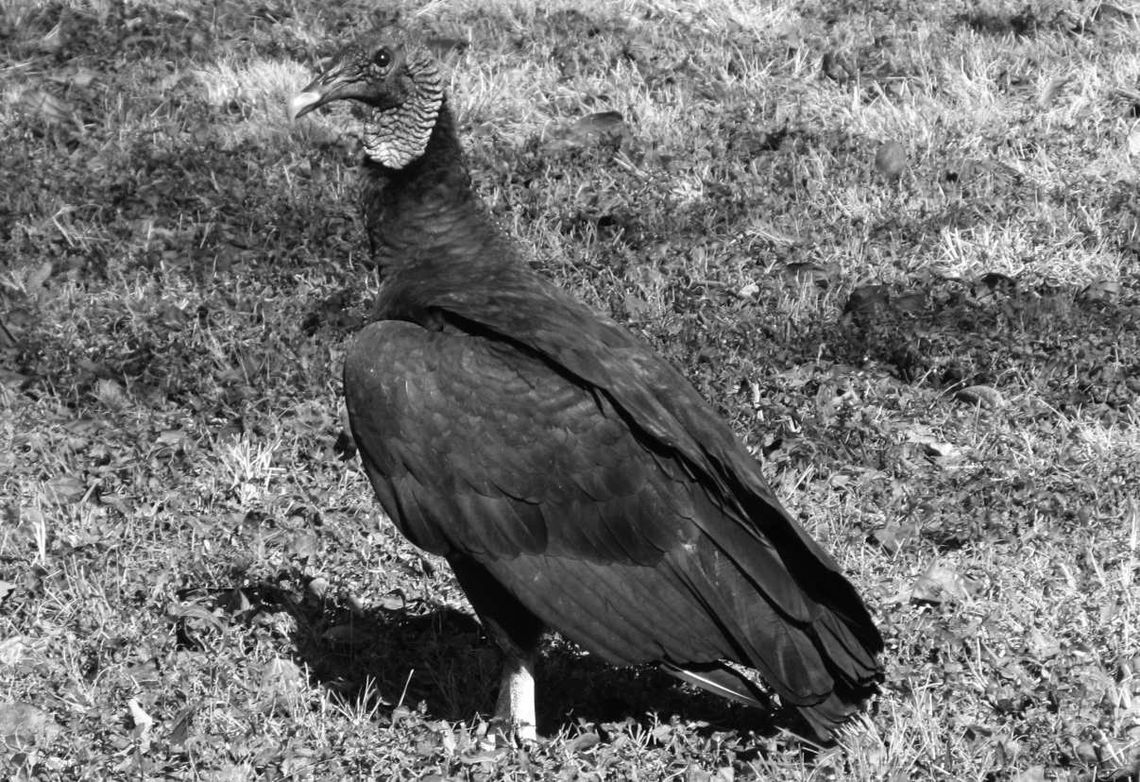The Black Vulture (Coragyps atratus) is one of three species of new world vultures that inhabits the United States. This particular species is a common carrion feeding bird that resides in the southeastern sections of this country. Unlike its close relative the Turkey Vulture, this species of “buzzard” has a limited range in this state. It can be observed year-round in the eastern two-thirds of the state, for unlike the Turkey Vulture, it does not follow any migratory paths with the changing of the seasons. The Concho Valley of central Texas is as far northwest as it has been recorded with any regularity.
This non-descript and rather un-attractive species of bird is surprisingly large, with a body length of approximately twenty- five inches, while the wingspan can be just under five feet. While these measurements are smaller than those of the Turkey Vulture, this species is actually a tad bit stockier as adults can weigh four and one-half pounds, a full one-half pound more than its close relative.
As bland in coloration as it is, the Black Vulture, or Buzzard as it is more commonly referred to, is easily recognizable. The dorsal (back) coloration is solid black, as is the breast and short, squared tail. The upper wings are black, while the under wings are a black with silver patches on the outer primary feathers.
The head is distinctively naked, and the skin on the head is black. This black head, along with the black body feathers is where the namesake originated from. Black Vultures are most commonly seen while foraging for food while high in the air. Unlike the other local vulture, it has a flight pattern that consists of quick, choppy wingbeats as it soars to a glide in random circles, teetering in an unsteady rhythm. Occasionally it can be seen perched on low-lying trees, shrubs or fenceposts, although it prefers to perch at higher elevations. It will often perch with its wings spread out, particularly in the early mornings, soaking up the rays of the sun.
Black Vultures are primarily communal, particularly when feeding on prey and when gathering in small groups to roost at night. Both sexes rotate turns at incubating the two three-inch long bluish eggs. The young are tended to after hatching for approximately five months by both parents.
By that time, the young have obtained their ability to fly and developed their sense of smell, which is the primary way of finding their preferred food items, just as in the Turkey Vulture.
The main diet of this new world vulture is carrion, or dead animals. Any and all species are consumed, regardless of the state of the deceased animal’s freshness or rottenness. However, this species is known to be more aggressive than other species of vultures and may actually attack and kill its prey. It is also known to dominate a carcass, not allowing any other species of vertebrates near the flesh buffet until it has achieved its fill.
Just as with Turkey Vultures, Black Vultures are commonly referred to as buzzards, although this name is technically not correct as buzzards are group of Old World species.





















